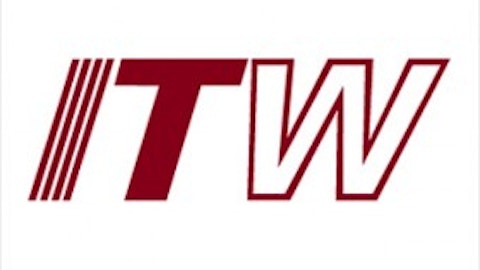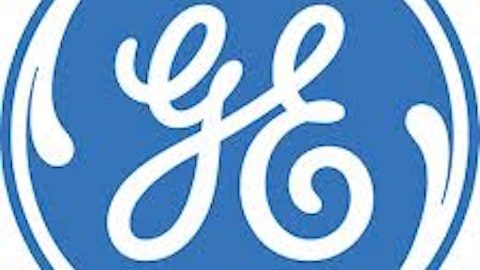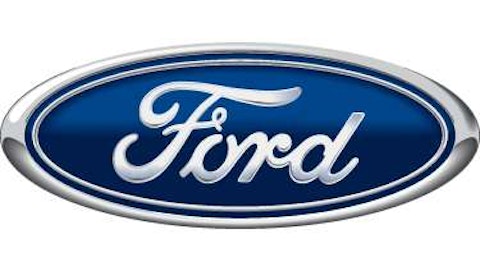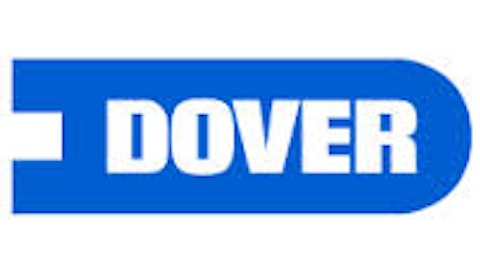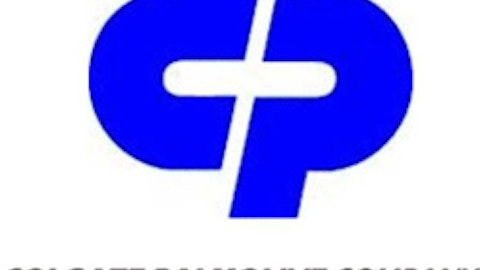America’s biggest industrials will probably never receive much attention from the financial media. Whereas today’s market headlines are reserved for social media stocks and technology start-ups that are sure to lead the investing world into the future, boring old industrials are often left out in the cold.
However, that doesn’t mean these companies haven’t earned a place in your portfolio. Far from it—in fact, these stocks shouldn’t be bought in spite of their lack of high-flier status, but rather because of it. These businesses are boring, and investors looking for a quick buck should look elsewhere. But that’s exactly why these stocks have stood the test of time, and will continue to do so for the foreseeable future.
Building your portfolio and America’s future, one brick at a time
Companies such as Dover Corp (NYSE:DOV) don’t spend much time in the media spotlight. All Dover has done is provide its investors with slow-and-steady results for decades.
Dover Corp (NYSE:DOV) has a diversified business model, manufacturing products that are critical to the communications, energy, and technology sectors. And, the company is extremely successful: revenue over the first half of the year increased 7%, and adjusted earnings per share grew at a superb 17% year over year.
And the good times aren’t expected to end any time soon. Along with its earnings report, Dover Corp (NYSE:DOV) reaffirmed its outlook for the full year, which includes revenue growth between 7% and 9%, and at least $5.56 in per-share earnings.

Speaking of increasing dividends, Dover Corp (NYSE:DOV) isn’t the only industrial sharing its success with investors. Diversified manufacturer Illinois Tool Works Inc. (NYSE:ITW) also recently gave its investors a dividend increase. The company bumped up its payout by 10.5%, and not only that, but it also gave investors an extra dose of rewards in the form of a new share buyback.
Along with its dividend raise, Illinois Tool Works Inc. (NYSE:ITW) announced a new $6 billion share repurchase authorization.
Illinois Tool Works Inc. (NYSE:ITW)’ products are used in electronics, power systems, and transportation. The company certainly has the profitability to back up such a strong history of returning cash to shareholders. It recently reported second-quarter results, which showed 6% growth in adjusted EPS.
Of course, no discussion of industrials with long histories of success is complete without first mentioning 3M Co (NYSE:MMM), formerly known as Minnesota Mining & Manufacturing.
There certainly isn’t much fanfare to owning 3M Co (NYSE:MMM), unless, of course, your aim is strictly profits and dividends.
3M Co (NYSE:MMM)’s recently released second quarter results showed 3% growth in both sales and EPS. Revenue clocked in at $7.8 billion, which set a company record.
3M Co (NYSE:MMM) also reiterated its outlook for the remainder of the year, which calls for at least $6.60 in EPS. Results like these are exactly why 3M has been able to reward shareholders so generously for such a long period of time.
Consider that earlier this year, 3M Co (NYSE:MMM) increased its dividend by 8%. Not only that, but the company also announced it had authorized a $7.5 billion stock buyback program. The dividend raise marked the 55th consecutive year of dividend increases. Furthermore, 3M has paid uninterrupted dividends to shareholders for an amazing 96 years in a row.
According to the company, over the past ten years 3M Co (NYSE:MMM) has returned $32 billion to shareholders through a combination of dividends and share repurchases, or 89% of reported net income.
